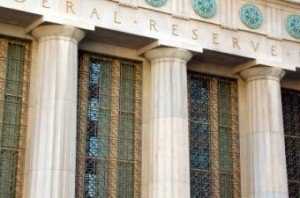
The Wall Street Journal reported that Federal Reserve Officials are looking at a stimulus scheme last used during and after WWII as part of their contingency plan for the next recession.
The Fed capped yields from 1942 to 1951—first on short-term bills and then long-term bonds—to help finance war spending and recovery.
During the past three recession, the Fed cut its benchmark rate by around 5 percentage points. The current rate is between 1.5% and 1.75%, which leaves less room to counteract a downturn.
Fed officials are unlikely to move this rate during their meetings this week.
The Journal states that the Fed’s plan for the next recession will rely heavily on two items it used during the 2007-09 recession—bond purchases, sometimes called quantitative easing, or QE, and forward guidance about plans to hold rates at very low levels for longer than investors expect.
The Fed cut interest rates for the third time in 2019 in October, dropping its benchmark lending rate for Federal funds to 1.5% to 1.75%.
Doug Duncan, Chief Economist with Fannie Mae, said the Fed cited “implications of global developments,” as the rationale for the cut.
Jarred Kessler, CEO of EasyKnock, said that expecting the economy to respond positively to declines in interest rates doesn’t always work out.
“Lowering rates doesn’t always have the economic impact we think, or expect it to have because it disrupts the natural economic ecosystem," Kessler said. "Just look at Japan, it can drive housing growth and a push in the stock market, but other facets of the economy are bound to lose. In the longer term this along with inflation can have a very negative impact."
Duncan, in Fannie Mae’s 2020 economic outlook, said housing will lead economic growth over the next year.
“While we believe the strength and resilience of the American consumer is the lynchpin of near-trend GDP growth, this year we expect consumer demand to re-establish housing construction as a significant contributor to economic growth—hence our theme for the year: A resilient economy overcomes risks to drive housing,” said Fannie Mae SVP and Chief Economist Doug Duncan. “Strong labor markets, rising wages, and improved household balance sheets offer consumer spending upside potential, including the ability to withstand minor economic disruptions.”
Fannie Mae expects the growing economic strength from housing that emerged in 2019 to carry into the rest of 2020, including solid growth in single-family construction spending and low mortgage rates.
Recent studies have indicated that this increased residential construction spending could help limit the negative effects of capital-spending weakness, despite not taking up a large segment of the economy. According to Bloomberg utilizing data from the Atlanta Fed, the stronger U.S. housing market could provide a cushion from the effect of a "derailment" in corporate spending.

 DSNews The homepage of the servicing industry
DSNews The homepage of the servicing industry









